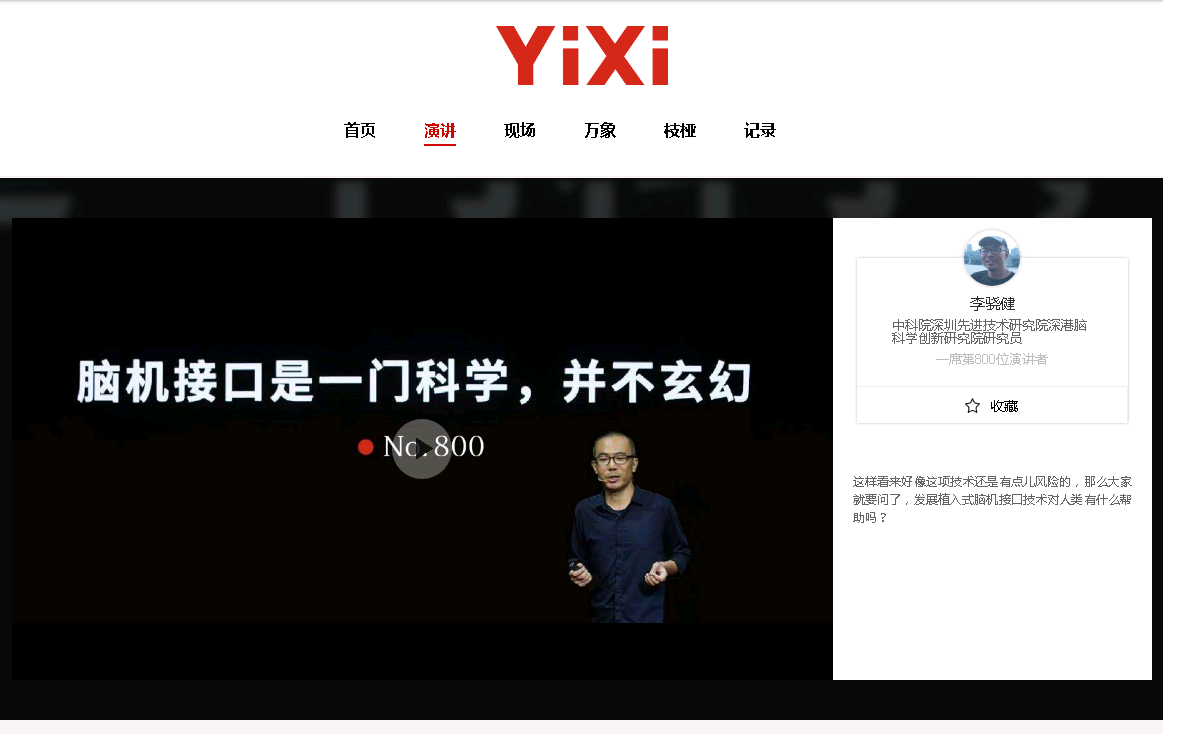
LI Xiaojian
Ph.D Professor Senior Engineer
The key technologies for Brain-Computer Interface and Neuromorphic Intelligence
脑机智能融合技术实验室
脑机智能融合技术实验室
Research
Neuro-electronic and Neuro-photonic technologies for high bandwidth Brain-Computer Interface. Neural circuit mapping and decoding technologies for neural network simulation and neuromorphic computing. Neuromorphic device and system development for humanoid robotics.Reverse-engineer the brain to advance artificial intelligence The approach of working backwards from measurements of the functioning system to engineer models of how that system works is called reverse engineering. Discovering how the human brain works in the language of engineers will not only lead to transformative A.I. It will also illuminate new approaches to helping those who are blind, deaf, autistic, schizophrenic, or who have learning disabilities or age-related memory loss. Armed with an engineering description of the brain, we will see new ways to repair, educate, and augment our own minds.

Nano-enabled neural interfaces
Advances in microscopy and molecular strategies have allowed researchers to gain insight into the intricate organization of the mammalian brain and the roles that neurons play in processing information. Despite vast progress, therapeutic strategies for neurological disorders remain limited, owing to a lack of biomaterials for sensing and modulating neuronal signalling in vivo. Therefore, there is a pressing need for developing material-based tools that can form seamless biointerfaces and interrogate the brain with unprecedented resolution.

Brain-Computer interface system
Brain–Computer interface (BCI) system aims to restore lost function in patients with neurological and neuropsychiatric disorders by creating a direct control pathway to the brain to read out neural activity, interact with an external device, and in some cases write in neural information by stimulating the brain. The BCI creates a closed-loop control system in which the brain is the controller, deciding on its control commands in the form of neural activity to move the neuroprosthetic limbs based on sensory feedback and movement goals.


链接:https://yixi.tv/#/speech/detail?id=914
微信二维码:
 微信公众号:
微信公众号:

Biography
2018-present, Principal Investigator, SIAT, CAS.2013-2018, Research Associate, Northwestern University, USA.
2010-2013, Postdoc Fellow, Medical College of Georgia, USA.
2010, Ph.D, Institute of Biophysics, CAS
2001, B.E, Northwest University.
Selected publications
1.Ledesma H, Li X, Carvalho-de-Souza J, Wei W, Bezanilla F, Tian B. An atlas of nano-enabled neural interfaces. Nature Nanotechnology (2019) 14: 645~657 2.Jiang Y*, Parameswaran R*, Li X* , et al. Non-genetic optical neuromodulation with silicon-based materials. Nature Protocols (2019) 14: 1339~1376 (* co-first author) 3.Yamawaki N, Li X , Lambot L, Ren L, Radulovic J, Shepherd GMG. Long-range inhibitory intersection of a retrosplenial thalamocortical circuit by apical tuft-targeting CA1 neurons. Nature Neuroscience (2019) 22: 618~626 4. Li X , Yamawaki N, Barrett JM, Körding KP and Shepherd GMG. Scaling of Optogenetically Evoked Signaling in a Higher-Order Corticocortical Pathway in the Anesthetized Mouse. Frontiers in Systems Neuroscience (2018) 5.15: 12:16. 5.Jiang Y*, Li X* , Liu B*, et al. Rational design of silicon structures for optically-controlled multiscale biointerfaces. Nature Biomedical Engineering (2018) 2: 508~521 (* co-first author)
